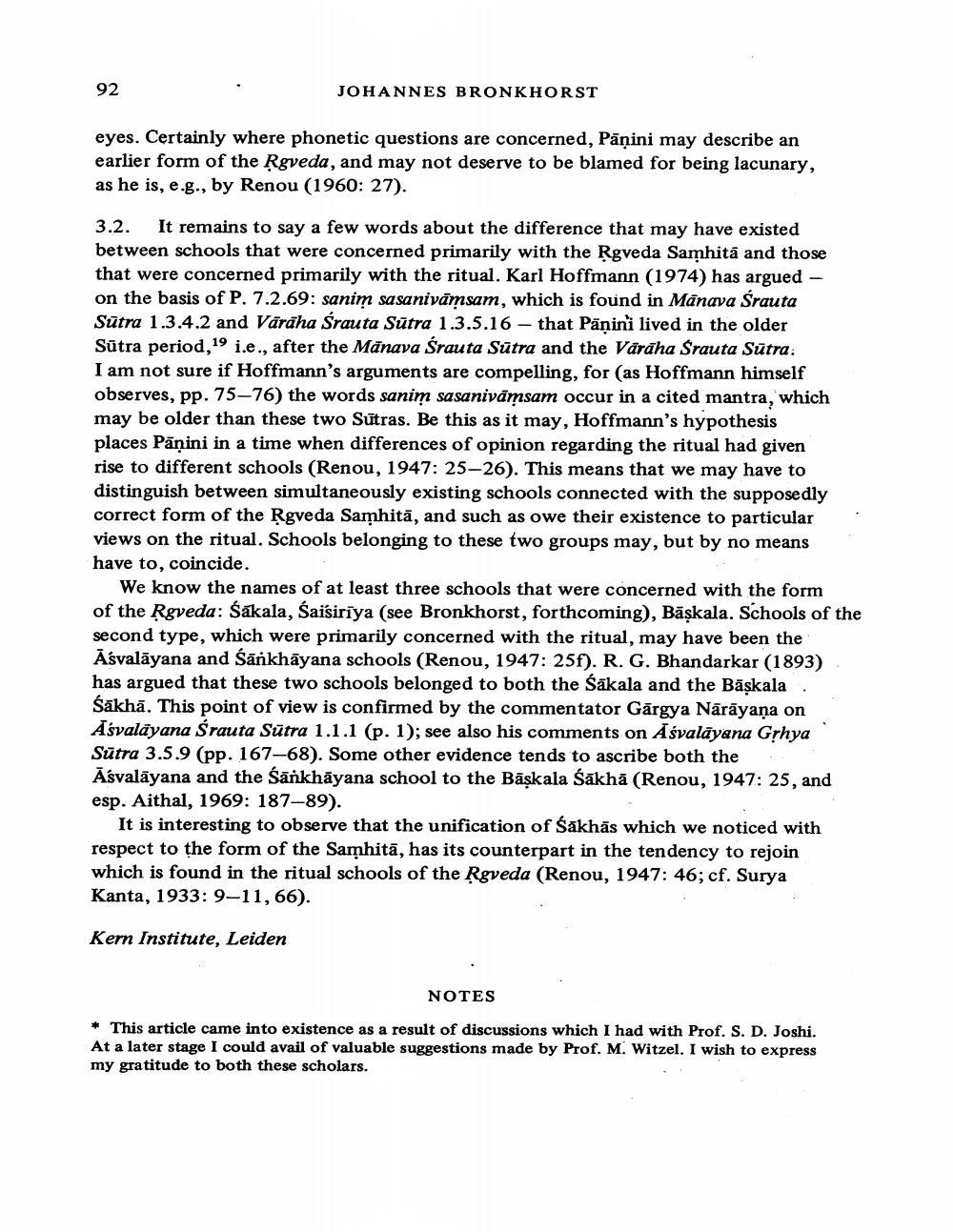________________
92
JOHANNES BRONKHORST
eyes. Certainly where phonetic questions are concerned, Pāṇini may describe an earlier form of the Rgveda, and may not deserve to be blamed for being lacunary, as he is, e.g., by Renou (1960: 27).
3.2. It remains to say a few words about the difference that may have existed between schools that were concerned primarily with the Rgveda Samhita and those that were concerned primarily with the ritual. Karl Hoffmann (1974) has argued - on the basis of P. 7.2.69: sanim sasanivāmsam, which is found in Mänava Srauta Sūtra 1.3.4.2 and Vārāha Srauta Sūtra 1.3.5.16 - that Pāṇinì lived in the older Sūtra period, 19 i.e., after the Mänava Srauta Sūtra and the Väräha Srauta Sutra: I am not sure if Hoffmann's arguments are compelling, for (as Hoffmann himself observes, pp. 75–76) the words sanim sasanivāmsam occur in a cited mantra, which may be older than these two Sūtras. Be this as it may, Hoffmann's hypothesis places Pāṇini in a time when differences of opinion regarding the ritual had given rise to different schools (Renou, 1947: 25-26). This means that we may have to distinguish between simultaneously existing schools connected with the supposedly correct form of the Rgveda Samhitā, and such as owe their existence to particular views on the ritual. Schools belonging to these two groups may, but by no means have to, coincide.
We know the names of at least three schools that were concerned with the form of the Rgveda: Sakala, Saisirīya (see Bronkhorst, forthcoming), Bāşkala. Schools of the second type, which were primarily concerned with the ritual, may have been the Āśvalāyana and Sankhāyana schools (Renou, 1947: 25f). R. G. Bhandarkar (1893). has argued that these two schools belonged to both the Śākala and the Başkala Śākhā. This point of view is confirmed by the commentator Gārgya Nārāyaṇa on Asvalāyana Śrauta Sūtra 1.1.1 (p. 1); see also his comments on Aśvalāyana Grhya Sūtra 3.5.9 (pp. 167-68). Some other evidence tends to ascribe both the Āśvalāyana and the Sānkhāyana school to the Bāskala sākhā (Renou, 1947: 25, and esp. Aithal, 1969: 187-89).
It is interesting to observe that the unification of Śakhās which we noticed with respect to the form of the Samhita, has its counterpart in the tendency to rejoin which is found in the ritual schools of the Rgveda (Renou, 1947: 46; cf. Surya Kanta, 1933: 9-11, 66).
Kern Institute, Leiden
NOTES
* This article came into existence as a result of discussions which I had with Prof. S. D. Joshi. At a later stage I could avail of valuable suggestions made by Prof. M. Witzel. I wish to express my gratitude to both these scholars.




